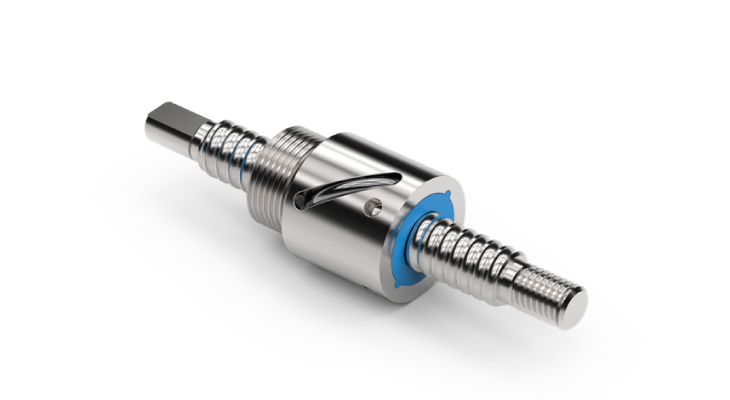Lead Screws vs Ball Screws: It's All about the Application

Motion-driven automation environments
Today’s emotion-driven automation environments demand effective linear motion control systems, such as lead screws and ball screws. Although lead screws are often seen as less expensive substitutes for ball screws, deciding on which type of screw to use is more complicated than focusing solely on cost.
The primary difference between lead screws vs. ball screws is that a ball screw uses ball bearings in the ball nut to eliminate the friction between the nut and screw, and lead screws do not. The screw and nut on a ball screw have matching helical grooves that allow ball bearings to re-circulate in those races and are typically semi-circular in shape to accept the spherical ball bearing. Lead screws use deeper helical threads and a mating nut, usually made of a polymer composite or bronze. The rolling nature of ball screws eliminates the sliding friction associated with lead screws.
Each type of actuator has its advantages and disadvantages. Before you can decide on what kind of screw to use, you need to understand how the distinct characteristics of each match your specific application.
What are the advantages/disadvantages of lead screws?
- Lead screws cost less.
- Lead screws are self-locking and do not require a braking system.
- Lead screws are better for vertical applications.
- Lead screws are generally less efficient, requiring greater torque and a larger motor and drive.
- Lead screws have higher friction and run at a hotter temperature.
- Most lead screws are not well suited to high throughput, high-speed applications, or those with continuous or long cycle times.
- Lead screws need to be replaced more frequently.
What are the advantages/disadvantages of ball screws?
- Ball screws require braking systems.
- Ball screws can have problems with vertical applications.
- Ball screws are more efficient, requiring less torque.
- Ball screws have lower friction and run at cooler temperatures.
- Ball screws require grease or oil lubrication to achieve design life.
- Ball screws need to be replaced less frequently.
- Ball screws are noisy.
- Ball screws require braking mechanisms to eliminate back-driving.
- Ball screws are more expensive than lead screws.
How does my application dictate which one to use?
Generally speaking, ball screws are better for applications that require smooth motion, efficiency, accuracy, precision, and prolonged continuous or high-speed movement. Traditional lead screws are more suitable for simple transfer applications for which speed, accuracy, precision, and rigidity are not as critical.
However, a new generation of precision lead screws—such as those offered by HELIX™ Linear Technologies—significantly increases lead screw accuracy. HELIX uses advanced thread-rolling processes and material composition technologies to provide precision engineering lead screws as accurately and repeatable as ball screws. The primary question to ask yourself about your application is how critical is accuracy? If precision is a priority, you may want to choose a ball screw or a precision-engineered lead screw.
Of course, there are always trade-offs to be made depending on your application. In addition to materials, assembly design, and accuracy, important variables to consider include wobble error, noise, maintenance, efficiency, and longevity. In most cases, evaluating the load, accuracy, and lead for your application will most generally answer the question of ball screw vs. lead screw. If the loading of your application turns out to be too great for a lead screw, use a ball screw or a precision-engineered lead screw instead.
Contact us today if you need help evaluating using a lead screw or ball screw for your linear-motion application.
If you found the information in this blog helpful, you may be interested in our Lead Screw Guide! Download your Lead Screw Guide by clicking below!



